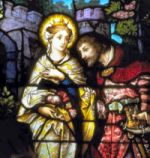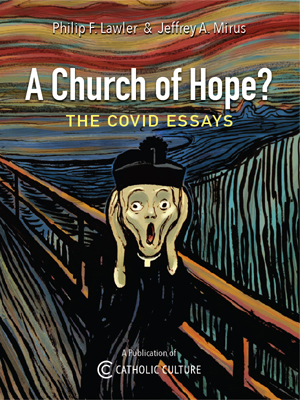Catholic World News News Feature
The new face of the College of Cardinals (Analysis) September 29, 2003
After the coming consistory of October 21, the College of Cardinals will have 135 members who are eligible to vote in a papal conclave.
In 1975, Pope Paul VI set the upper limit for the number of cardinal-electors at 120, and Pope John Paul II confirmed that limit in his own apostolic constitution Universi Dominic Gregis in 1996. But John Paul surpassed the limit himself once before, when the consistory of February 2001 temporarily drove the figure up to the same number: 135.
The total will fall quickly, however. Even leaving aside the likelihood that some cardinals will die in the coming months, by early next year 12 cardinals will reach the age of 80, and thus become ineligible to vote in a conclave.
The 135 cardinals who will be electors as of October 22 come from 59 different countries. Their geographical distribution is roughly similar to that of the world's Catholic population. Almost half of the electors-- 49 percent-- are European; 18 percent are from Latin America; North Americans make up just over 10 percent of the electors, while Asia and Africa are slightly less than 10 percent apiece; Oceania (including Australia) accounts for a final 4 percent.
Italy remains the country with the heaviest representation, with 23 cardinal-electors. The United States is next with 11, followed by Spain (8), Brazil and Germany (6), Poland and France (5). There are 25 cardinals (including the new designees) serving at the Vatican, 88 heading their own dioceses, and 22 with no current apostolic assignment-- in most cases because they have retired.
Pope John Paul II will have created 231 cardinals-- plus one who remains in pectore -- at the 9 consistories of his 25-year pontificate. Of that number, 130 will remain cardinal-electors, comprising 96 percent of the prelates eligible to vote at a conclave.
The election of a new Pontiff requires a two-thirds majority of the votes among the prelates who participate in the election. Thus if 135 cardinal-electors participated, 90 votes would be needed.
The Pope-- who, as supreme legislator for the Church, sets the rules for a papal conclave-- has the authority to set aside the upper limit of the number of cardinals who are eligible to vote. But by exceeding the limit, the Holy Father has created a potential difficulty for canon lawyers. The cardinals who will supervise a papal conclave do not have the authority to lay aside rules set by a Roman Pontiff. So if the Pope dies while the number of cardinal-electors remains above 120, the cardinals charged with the organization of the conclave would be bound by the statutory limit. Presumably Pope John Paul has added a codicil to his will, giving those prelates the authority to modify the limit on cardinal-electors.






